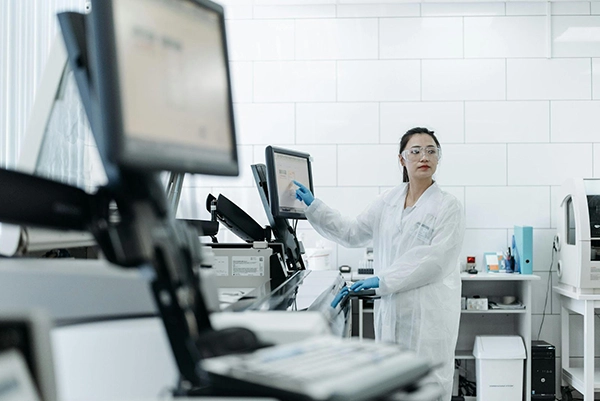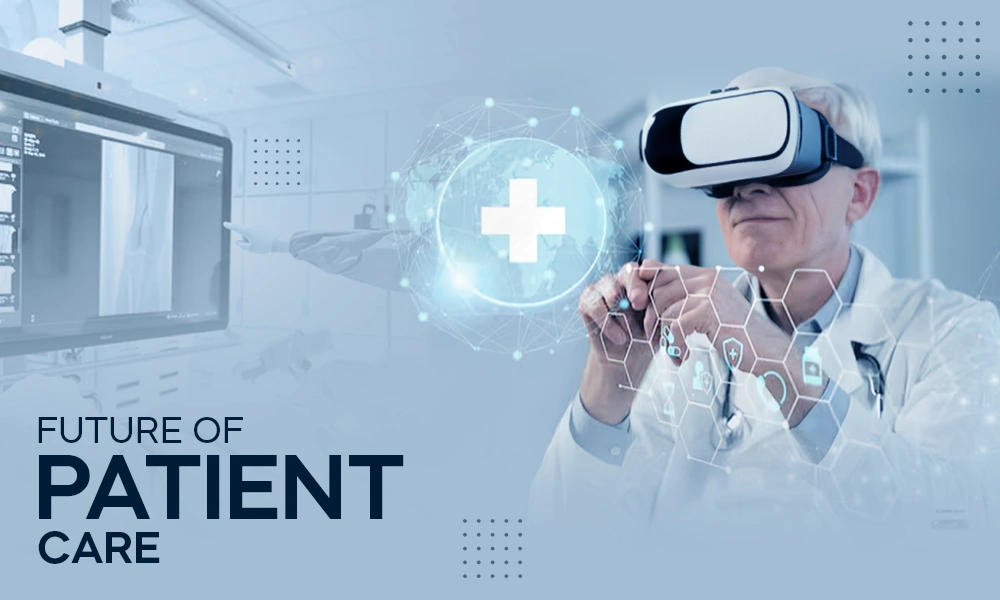Radiology in healthcare is the core process of diagnosing the actual disease and finding the root cause to start with further treatment and patient care. With the robust advancements and innovations in radiology, staying ahead and practicing the current trends to provide optimal patient care is paramount.
Innovations such as AI, machine learning, cloud computing, and remote consultations have streamlined the radiologist workflow, leading to a better patient overall experience. So to take charge of all the new trends and breakthroughs, delve into the article and maximize the healthcare workflow.

Understanding Radiology Workflows
Radiology workflows can be overwhelming as they require technical understanding, observation skills and reporting and analysis of the diseases. To streamline the radiology workflow, imaging technology has been refined to provide effective and accurate patient care. Introducing innovations like 3D technology, MRI and optimal-quality CT scans can provide an in-depth analysis of the patient and various organ conditions.
Optimizing Every Stage of the Patient Journey
Optimizing the patient history and current analysis provides a better time for the healthcare professional to focus on the diagnosis and treatment planning. From scheduling appointments to initial consultations to long-term check-ups, digital platforms can provide the best work management and patient-centric approach.
Additionally, for those looking for radiology workflow management to focus on case-taking and other key aspects, click here or take into consideration the potential of reputable service providers.
Cloud Computing Solutions
The traditional procedures of saving all the data and information of the radiology departments rely on the local servers. But not any more, with the advent of cloud computing solutions, radiology departments can store large volume datasets, ensuring instant access and collaboration anytime and anywhere.
Radiologists and other healthcare professionals tend to share the patient’s case history with their colleagues for a better diagnosis, so in those cases, cloud computing solutions can outshine, providing clear collaboration and communication with the required images and reports.
Automation and Workflow Standardization
Reducing human needs and miscellaneous errors, automating the workflow can leverage productivity and operations. Embracing the advanced technologies and features, the radiologist can automate the imaging reports, and patient diagnosis summaries, without any hassle.
Automated workflow standardization can reduce the manual workload of humans and ensure error-free reports for making informed decisions about long-term patient care. Hence, the integration of the automated workflow not only offers better patient care but also promises a friendly work environment, reducing stress and hassle.
Telemedicine and Remote Consultations
Telemedicine is the new normal, which is explained as a process to seek advice from doctors on phone calls, video meetings or messages in the non-emergency states. This helps to avoid the hassle of visiting real clinics and waiting for their turn.
This method has taken the rise and thrived across the globe in the time of the COVID-19 pandemic when everyone was forced to be locked up. By taking into consideration the new technology in radiologists, the doctors, or the advisors can get access to the imaging reports with the integration of the teleradiology systems.
As per the reports of the American College of Radiology, the telemedicine practice can be impactful in meeting the growing demands of healthcare, especially in targeting rural areas where the facilities are limited.
Improving Patient Engagement
Adopting the advanced methods and technologies, the healthcare departments have evolved at its best. Embracing the patient care systems and online consultation has improved patient engagement, by ensuring informed consultations and deep analysis of the imaging reports.
The patient puts their honest heart and trust in the doctor and depends on continuous follow-ups and reliable consultation. One of the innovations has introduced patient portals to securely communicate with the concerned authorities with full access to their health records.
Data Management and Analytics
Keeping the health records and data history of the patient secure and safe from any unrecognized access is crucial to maintaining trust and credibility. So to ensure a robust, secure ecosystem, data management tools should be integrated into the workplace.
This can help a complete analysis of the imaging orders, reports submission, and tracking of the pending orders to make data-driven decisions.
Overall, robust management software ensures insights into the team’s performance, and loopholes are addressed to ensure seamless productivity and workflow at all times.
Conclusion
In a nutshell, the advancement in radiology technologies deserves an appreciation for streamlining the operations and most importantly ensuring better patient care. The above-mentioned are some popularly used technological innovations, but these are not the end.
As per the specific individual’s requirements and needs, one can integrate the AI, machine learning and data analytics tools to get the desired outcomes.
How has technology impacted radiology?
Healthcare professionals can now obtain the deep analysis and root cause of the disease by taking into consideration the high-tech CT scans, X-rays and more.
Why is imaging technology important?
For a long time, imaging technology has become an essential tool for doctors and health advisors to diagnose majorly all time types of medical illnesses and abnormalities.
What is the most useful advancement in radiology?
AI-aided interpretation and 3D analysis of illness have come out to be the most useful imaging technology.




